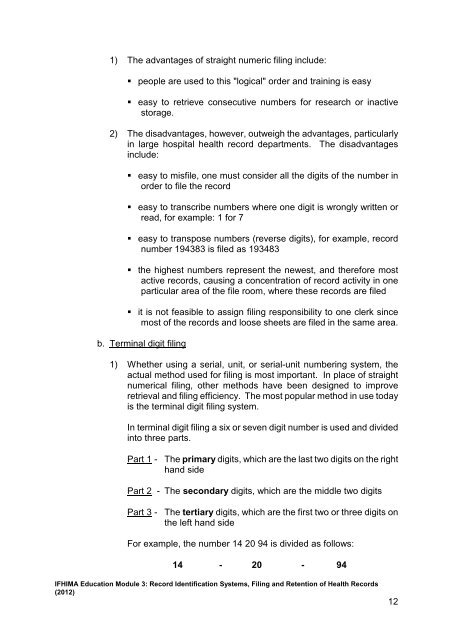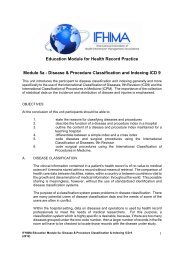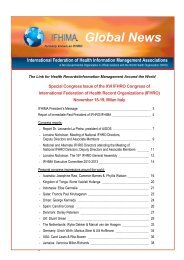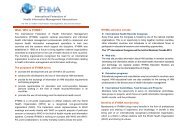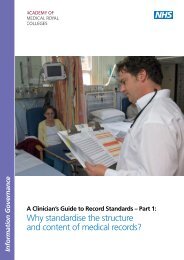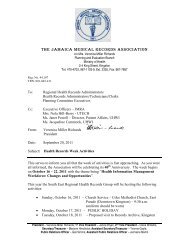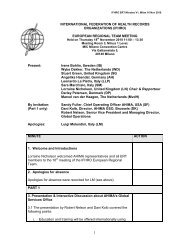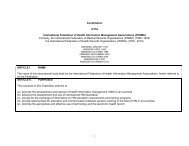Learning Packages for Medical Record Practice - ifhima
Learning Packages for Medical Record Practice - ifhima
Learning Packages for Medical Record Practice - ifhima
Create successful ePaper yourself
Turn your PDF publications into a flip-book with our unique Google optimized e-Paper software.
.<br />
1) The advantages of straight numeric filing include:<br />
� people are used to this "logical" order and training is easy<br />
� easy to retrieve consecutive numbers <strong>for</strong> research or inactive<br />
storage.<br />
2) The disadvantages, however, outweigh the advantages, particularly<br />
in large hospital health record departments. The disadvantages<br />
include:<br />
� easy to misfile, one must consider all the digits of the number in<br />
order to file the record<br />
� easy to transcribe numbers where one digit is wrongly written or<br />
read, <strong>for</strong> example: 1 <strong>for</strong> 7<br />
� easy to transpose numbers (reverse digits), <strong>for</strong> example, record<br />
number 194383 is filed as 193483<br />
� the highest numbers represent the newest, and there<strong>for</strong>e most<br />
active records, causing a concentration of record activity in one<br />
particular area of the file room, where these records are filed<br />
� it is not feasible to assign filing responsibility to one clerk since<br />
most of the records and loose sheets are filed in the same area.<br />
Terminal digit filing<br />
1) Whether using a serial, unit, or serial-unit numbering system, the<br />
actual method used <strong>for</strong> filing is most important. In place of straight<br />
numerical filing, other methods have been designed to improve<br />
retrieval and filing efficiency. The most popular method in use today<br />
is the terminal digit filing system.<br />
In terminal digit filing a six or seven digit number is used and divided<br />
into three parts.<br />
Part 1<br />
Part 2<br />
Part 3<br />
- The primary digits, which are the last two digits on the right<br />
hand side<br />
- The secondary digits, which are the middle two digits<br />
- The tertiary digits, which are the first two or three digits on<br />
the left hand side<br />
For example, the number 14 20 94 is divided as follows:<br />
14 - 20 - 94<br />
IFHIMA Education Module 3: <strong>Record</strong> Identification Systems, Filing and Retention of Health <strong>Record</strong>s<br />
(2012)<br />
12


